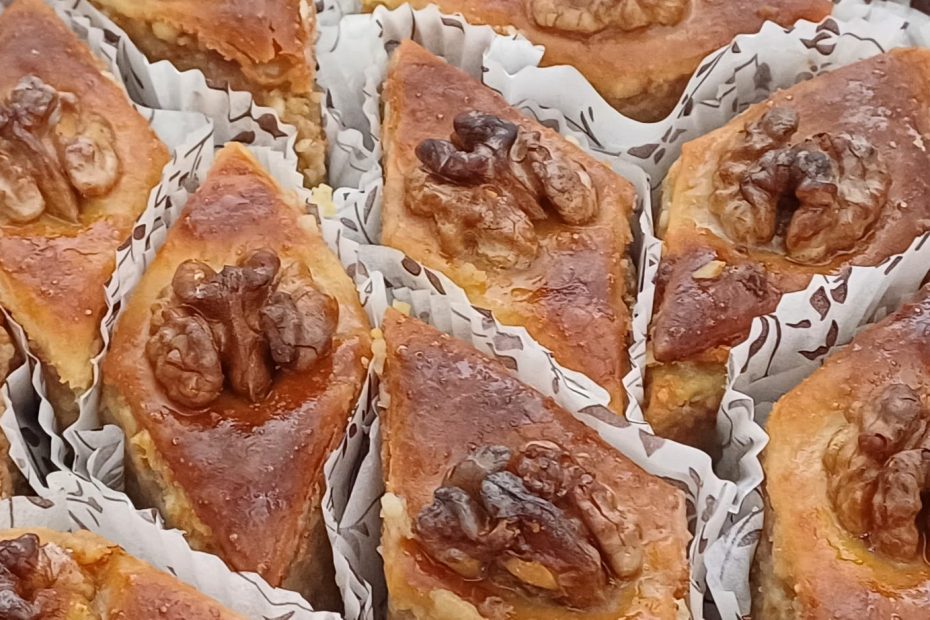Azerbaijani Pakhlava: A Sweet Taste of Tradition
Pakhlava, or baklava as it is commonly known in many parts of the world, is a beloved pastry that has deep roots in Azerbaijani cuisine. Known for its rich, flaky layers and sweet, nutty filling, Azerbaijani pakhlava is a treat that delights the senses. It is not just a dessert, but an essential part of the country’s culinary traditions, often made for special occasions and holidays. If you’ve never tried this delicious pastry, here’s a glimpse into why Azerbaijani pakhlava is so cherished.
1. The Origins of Azerbaijani Pakhlava
Pakhlava has a long history that spans across different cultures and regions. While it is often associated with Turkish and Middle Eastern cuisines, Azerbaijani pakhlava has its own distinct characteristics that set it apart. The pastry is believed to have been brought to Azerbaijan by the Persians, and over time, it has evolved into a unique version that reflects the country’s culture and ingredients.
In Azerbaijan, pakhlava is especially popular during major holidays such as Novruz (New Year), weddings, and other festive occasions. It’s a dessert that brings families together, with each region in Azerbaijan having its own variations and secret recipes.
2. Ingredients That Make Azerbaijani Pakhlava Special
The key to Azerbaijani pakhlava’s deliciousness lies in its ingredients. The layers of dough are typically made with flour, water, and a bit of oil or butter, creating a delicate and flaky texture that melts in your mouth. But what really gives pakhlava its signature taste is the filling.
The traditional Azerbaijani version uses a combination of finely ground walnuts, almonds, and hazelnuts. These are mixed with sugar and spices such as cinnamon, cardamom, and sometimes saffron, creating a rich, aromatic filling that contrasts beautifully with the dough. The baklava is then baked until golden brown and topped with a sweet syrup made from honey, sugar, and rosewater.
3. The Art of Making Pakhlava
Making Azerbaijani pakhlava is truly an art form, requiring both skill and patience. The dough must be rolled out into very thin layers, sometimes as thin as paper, and then stacked with the nut mixture in between. This process can take hours, as each layer must be carefully added to ensure the pastry bakes perfectly.
Traditionally, Azerbaijani pakhlava is shaped in a diamond pattern, which is a hallmark of the pastry. This distinctive shape not only makes it visually appealing but also helps the syrup to seep into every corner of the dessert, giving each piece a deliciously sweet and moist texture.
4. Cultural Significance of Pakhlava in Azerbaijan
Pakhlava holds a special place in Azerbaijani culture. It is often served to guests as a sign of hospitality and respect, and it is a dessert that brings people together. During Novruz, a celebration of the coming of spring, pakhlava is one of the main sweets served alongside other traditional foods. The pastry is also shared at weddings and other family gatherings, symbolizing joy, unity, and prosperity.
In Azerbaijan, it’s not just the taste of pakhlava that matters—it’s the care and attention put into making it. It’s often passed down through generations, with each family adding their own little touch to the recipe. For many Azerbaijanis, making pakhlava is a cherished tradition that strengthens family bonds and celebrates the country’s rich culinary heritage.
5. Where to Find the Best Pakhlava in Azerbaijan
While you can find pakhlava in bakeries and cafes throughout Azerbaijan, there are some places known for their exceptional quality. In Baku, the capital, numerous sweet shops specialize in making this delicious pastry, often offering varieties filled with different types of nuts or flavored with exotic ingredients like pomegranate. If you’re traveling through the regions of Azerbaijan, you’ll find that each area has its own distinctive way of preparing pakhlava, making it a great treat to sample as you explore the country.
Conclusion
Azerbaijani pakhlava is more than just a sweet treat; it is a reflection of the country’s history, culture, and hospitality. Its rich flavor, delicate texture, and cultural significance make it a must-try dessert for anyone visiting Azerbaijan or interested in its culinary traditions. Whether enjoyed during a holiday, at a family gathering, or simply as an afternoon snack with tea, pakhlava is sure to leave a lasting impression.
